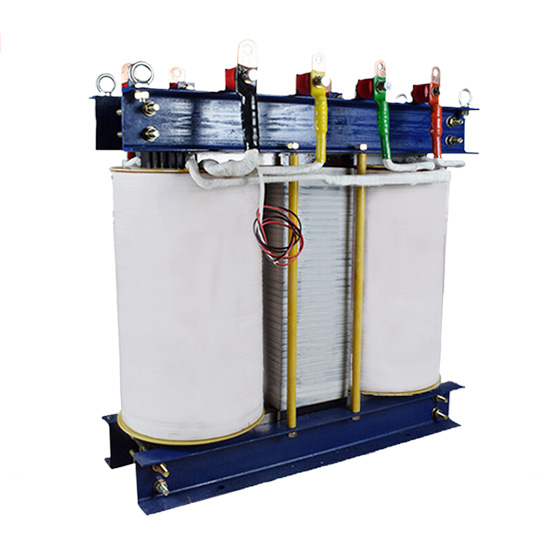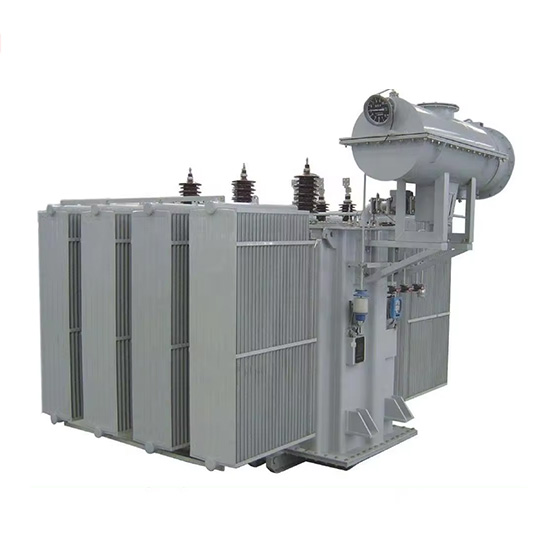Photovoltaic specialized transformer
With the advancement of global energy structure transformation,renewable energy has gradually become a development focus in the energy sector.Photovoltaic power generation,as an important renewable energy source,plays an increasingly important role in the power system.In the photovoltaic power generation system,the step-up transformer is a crucial component,and its performance and reliability directly affect the stability and efficiency of the entire system.This article will provide a detailed explanation of the structure,characteristics,applications,and selection of photovoltaic step-up transformers. Photovoltaic step-up transformer is a key equipment used in photovoltaic power generation systems to boost low voltage level electrical energy to high voltage level.Its structure is similar to that of a regular power transformer,consisting of iron core,winding,insulation material,and heat dissipation system.However,in the design and manufacturing process of photovoltaic step-up transformers,some special factors need to be considered,such as high temperature,high humidity,high altitude,high lightning strikes and other harsh environmental conditions,as well as lightning protection,overload protection and other functions. Product features: 1.High reliability:Due to the fact that photovoltaic power generation systems are generally located in remote areas and operate in harsh environments,it is required that the step-up transformer has high reliability and durability,and can operate stably in extreme environments. 2.High efficiency:As an energy conversion device,the step-up transformer should have a high conversion efficiency to reduce energy loss and equipment heating. 3.Strong adaptability:The step-up transformer in the photovoltaic power generation system needs to adapt to different operating requirements and environmental conditions.For example,for power stations with different geographical locations and climatic conditions,step-up transformers should be able to be flexibly configured to meet different capacity requirements,voltage levels,and insulation levels. 4.Environmental protection and energy conservation:With the increasing awareness of environmental protection,the design of step-up transformers should also pay attention to environmental protection and energy conservation,such as using low loss materials,optimizing structural design,and other measures to reduce energy consumption and noise pollution. Application of photovoltaic step-up transformers in photovoltaic power generation systems: 1.Centralized photovoltaic power generation system:In a centralized photovoltaic power generation system,due to the low power output of solar panels,multiple step-up transformers are required to boost the electrical energy to a high voltage level,and then transmit it to the power system through transmission lines. 2.Distributed photovoltaic power generation system:In a distributed photovoltaic power generation system,due to the placement of solar panels on the roof or ground of buildings,which are close to the load center,electrical energy can be directly sent to the low-voltage distribution system without the need for a step-up transformer. 3.Energy storage photovoltaic power generation system:In the energy storage photovoltaic power generation system,since the charging and discharging of the energy storage battery need to be completed in a short time,the electrical energy needs to be quickly boosted to a high voltage level through a step-up transformer to reduce the impact of charging and discharging currents on battery performance. The selection of photovoltaic step-up transformers needs to consider the following factors: 1.Capacity:The capacity of the step-up transformer is determined based on factors such as the installed capacity of the photovoltaic power generation system,power demand,and power transmission distance.In general,the capacity of the step-up transformer should be slightly greater than the output power of the solar panel. 2.Voltage level:Select the voltage level of the step-up transformer according to the requirements of the output voltage level of the photovoltaic power generation system.In general,the voltage level of the step-up transformer should match the output voltage level of the solar panel. 3.Loss:When choosing a step-up transformer,attention should be paid to its energy efficiency indicators and loss situation.Choosing low loss and high-efficiency step-up transformers can reduce operating costs and improve system efficiency. 4.Protection level:As photovoltaic power generation systems are generally located in harsh environments,it is required that the step-up transformer has a high protection level to cope with harsh environmental conditions such as high temperature,high humidity,high altitude,and high lightning strikes. In summary,as one of the key equipment in photovoltaic power generation systems,the performance and reliability of photovoltaic step-up transformers directly affect the stability and efficiency of the entire system.When selecting and applying photovoltaic step-up transformers,factors such as their structural characteristics,application scenarios,and selection requirements should be fully considered to ensure the normal operation of the system and maximize its benefits.Meanwhile,with the continuous advancement and development of technology,the performance and reliability of photovoltaic step-up transformers will be further improved and perfected,providing stronger support for the future development of renewable energy.
More +








